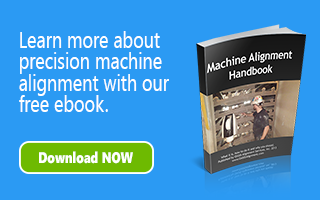Defined by ASME (American Society of Mechanical Engineers) in standard Y14.5, tolerance is “the total amount a specific dimension is permitted to vary. The tolerance is the difference between the maximum and minimum limits”.
Tolerance specifications and guidelines are used in all areas of manufacturing – from the tolerance standards for the components within a piece of production equipment, to the tolerances specified for the parts or products being produced. When applied correctly, tolerances are key to maintaining the proper operating efficiency of your machinery and to producing the highest quality parts and products.
OASIS engineers and field service technicians have years of experience and working knowledge of the standard tolerances for a wide variety of manufacturing process lines such as paper machines, coaters/laminators and corrugators. In a previous series of posts on the Precision Alignment of Winders, we provided tolerance guidelines for aligning winder components. In this post, we provide tolerance guidelines for the components that make up the forming section of a paper machine.
Alignment tolerances for a paper machine are required from one end to the other and need to be maintained continuously throughout its operation. Many in the paper industry are challenged more than others simply due to the fact that a large amount of the paper machines running today are timeworn with decades of use taking a toll on the equipment. However aligning paper machine components to standard tolerances will help maintain or improve a well-running machine. Here we provide tolerance guidelines for several wet end forming configurations. In future posts, we will provide tolerances for additional areas of your paper machine.

 You will notice that twin wire former configurations require tighter tolerances. This is due to the fact that the wires are much shorter and are running at faster speeds and any misalignment can cause significantly faster roll cover wear leading to cone shaped rolls and other issues.
You will notice that twin wire former configurations require tighter tolerances. This is due to the fact that the wires are much shorter and are running at faster speeds and any misalignment can cause significantly faster roll cover wear leading to cone shaped rolls and other issues.
It is important to note that the forming components listed will run adequately when found to exhibit greater misalignment than the tolerances shown. However, in order to attain peak performance, it is highly recommended that you take every opportunity to stay within the tolerance guidelines shown.
In a future post we will provide tolerance guidelines for your press section. In the meantime, if you would like additional information on standard tolerances for your production equipment, we would be happy to assist you. Please contact us with any questions or if you would like a site visit to your facility.


What width machine do you assume with these tolerances? 100″, 200″, 300″?